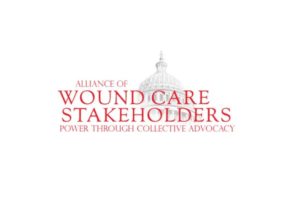 In its comments submitted to the Center for Medicare and Medicaid Services (CMS) in early October, the Alliance of Wound Care Stakeholders voiced its opposition to payment cuts from 5–9% for surgical procedures and 9% for physical therapy services as proposed by CMS in its CY2021 Physician Fee Schedule.
In its comments submitted to the Center for Medicare and Medicaid Services (CMS) in early October, the Alliance of Wound Care Stakeholders voiced its opposition to payment cuts from 5–9% for surgical procedures and 9% for physical therapy services as proposed by CMS in its CY2021 Physician Fee Schedule.
The Alliance also called on CMS to:
- Adopt all of the American Medical Association’s RVS (resource-based relative value scale) Update Committee (RUC) recommendations, including updated evaluation and management service values in procedure codes with 10- and 90-day global periods;
- Maintain a patient’s home as an originating site even when the public health emergency (PHE) expires;
- Create an MVP for chronic wound management, and utilise the Qualified Clinical Data Registry (QCDR) measures that already exist for wound care in the US wound registry; and
- Include many additional telehealth codes for physical therapy services.
“We believe CMS’s actions will negatively impact patients,” says Marcia Nusgart, executive director, Alliance for Wound Care Stakeholders, in response to CMS’s proposed CY2021 Hospital Outpatient Prospective Payment System. “We join physician specialty societies and clinical associations in calling on CMS to prevent drastic cuts from occurring. This is a critical moment for wound care policy as our members recover from the financial burdens of COVID-19, embrace innovation, and learn from recent successes such as expanded telehealth reimbursement.”
CY2021 Hospital Outpatient Prospective Payment System: CTP coding and payment concerns flagged
The Alliance called on CMS to replace the term “skin substitutes”, which they claim is clinically and technically inaccurate, with the “more inclusive” descriptor “Cellular and/or Tissue based Products” (CTPs) for skin wounds—a term that it says more accurately describes all technologies in this sector and that is inclusive of both current and future technology. The Alliance supported inclusion of synthetic CTPs in the definition of “skin substitutes”/CTPs but expressed significant concerns with the agency’s proposed establishment of a unique C code (pricing code) to define an entire class of non-branded products and the placement of these products in the Hospital Outpatient Prospective Payment System high cost payment package. Alliance comments to these updates in CMS’ proposed CY2021 updates to the Hospital Outpatient Prospective Payment System alerted the agency to the confusion this could result in and offered recommendations for more consistent coding process for CTPs.













